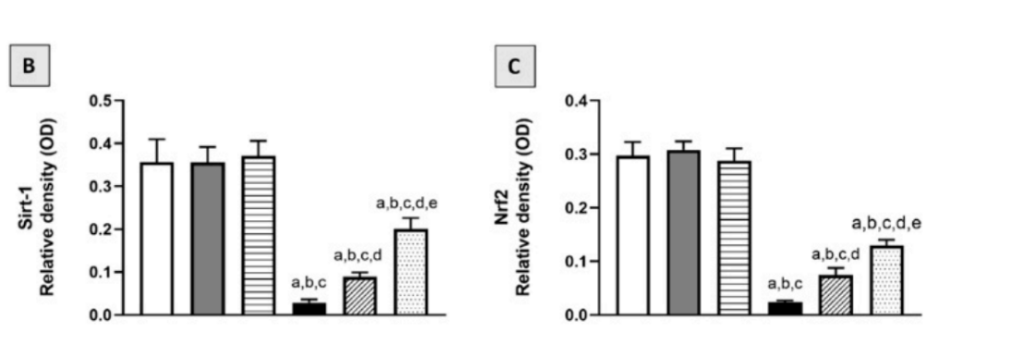Introduction: Confronting the Perils of Drug-Induced Kidney Damage
Nephrotoxicity remains a significant challenge in modern medicine, particularly with drugs like gentamicin, an aminoglycoside antibiotic. While effective against infections, gentamicin’s nephrotoxic effects pose risks, including oxidative stress, inflammation, and apoptosis, leading to kidney dysfunction. Researchers have turned to innovative solutions such as Parthenolide Phytosomes (PTL-phytosomes) to counter these challenges. Derived from the feverfew plant, PTL-phytosomes combine natural therapeutic benefits with improved bioavailability through advanced nano-formulation. By targeting oxidative stress, inflammation, and cell death, PTL-phytosomes present a promising avenue for mitigating kidney damage.
Research Objectives: A Team on a Mission for Kidney Health

A study led by Rawan S. Albalawi, Lenah S. Binmahfouz, Rawan H. Hareeri, Rasheed A. Shaik, and Amina M. Bagher from King Abdulaziz University in Jeddah, Saudi Arabia, sought to evaluate PTL-phytosomes’ effectiveness against gentamicin-induced nephrotoxicity. Conducted in 2023 and published in Molecules, the research aimed to uncover the potential of PTL-phytosomes in reducing oxidative damage, inflammation, and structural kidney damage, offering hope for therapeutic advancements.
Methodology: Engineering a Nano-Solution for Nephrotoxicity
To enhance PTL’s bioavailability, the research team developed PTL-phytosomes using a solvent evaporation method. These nano-sized particles, averaging 407.4 nm, featured an oval morphology with multiple edges. The study employed a rat model divided into six groups, each receiving different treatments, including PTL-phytosomes at varying doses and gentamicin-induced nephrotoxicity. Biochemical markers, histological examinations, and molecular analyses were used to assess the impact of PTL-phytosomes on kidney function and cellular health.
Results: Unveiling the Multifaceted Protection of PTL-Phytosomes
The study provided extensive evidence of the protective role of PTL-phytosomes against gentamicin-induced nephrotoxicity, supported by detailed biochemical, histological, and molecular data.
Kidney Function Markers
Gentamicin administration significantly increased kidney function markers, including urea (133.3%), creatinine (217.9%), and cystatin C (200%) compared to the control group. Treatment with PTL-phytosomes effectively mitigated these elevations, with the high-dose group (10 mg/kg) reducing serum urea, creatinine, and cystatin C levels by 29.5%, 35.1%, and 50.1%, respectively, restoring them closer to normal levels.

Histological Recovery
Histopathological analyses of kidney tissues revealed severe damage in gentamicin-treated rats. Observations included tubular necrosis, glomerular degeneration, cystic dilations, and extensive inflammatory cell infiltration (Figure 4A–C). PTL-phytosome treatment significantly ameliorated these changes. In the high-dose group, kidney structures, including renal corpuscles and tubules, appeared nearly normal, with minimal signs of necrosis or inflammation. Notably, kidney injury scores improved markedly, decreasing from 4.2 in the gentamicin-only group to 0.5 in the high-dose PTL-phytosome group.
Oxidative Stress Reduction
Gentamicin-treated rats exhibited elevated oxidative stress, as evidenced by a 136.3% increase in kidney malondialdehyde (MDA) levels (Figure 7A) and decreased activities of antioxidant enzymes, superoxide dismutase (SOD), and catalase (CAT), by 34.4% and 38.5%, respectively (Figure 7B–C). PTL-phytosomes reversed these effects, with the high-dose group reducing MDA levels by 46.2% and increasing SOD and CAT activities by 47.6% and 58.8%, respectively, indicating robust antioxidative protection.

Molecular Markers of Oxidative Defense
Protein analyses showed that gentamicin significantly suppressed the expression of key antioxidant defense markers, including Sirt-1, Nrf2, NAD(P)H quinone dehydrogenase 1 (NQO1), and heme oxygenase-1 (HO-1), (Figure 8B–E).


PTL-phytosome treatment restored and enhanced these markers. The high-dose group increased Sirt-1, Nrf2, NQO1, and HO-1 expressions by 595.5%, 441.7%, 612%, and 210.6%, respectively, compared to the gentamicin-only group, demonstrating the activation of protective signaling pathways.
Anti-Inflammatory Effects
Gentamicin significantly increased the expression of pro-inflammatory cytokines and mediators, including IL-6 (166.1%), TNF-α (169.5%), COX-2 (163.4%), and NF-κB (157.3%) (Figure 9A–D). PTL-phytosome treatment effectively suppressed these markers, with reductions of 45.8% for IL-6 and 46.3% for TNF-α in the high-dose group, highlighting its anti-inflammatory potential.

Regulation of Apoptosis
Apoptosis markers further illustrated the protective effects of PTL-phytosomes. Gentamicin significantly increased Bax expression (270%) and reduced Bcl-2 expression (37%), resulting in a 487.3% increase in the Bax/Bcl-2 ratio (Figure 10A–C).

PTL-phytosome treatment restored balance, decreasing Bax expression by 50.5% and increasing Bcl-2 expression by 49.2%, reducing the Bax/Bcl-2 ratio by 66.8%.
Histological Confirmation of Fibrosis and Damage
Stains such as Masson’s Trichrome (MT) and Sirius Red (SR) revealed significant interstitial fibrosis in the gentamicin-treated group, with collagen deposition area increasing to 2.11% (Figure 5A–C). PTL-phytosome treatment reduced fibrosis, with the high-dose group showing a collagen deposition area of 0.96%, nearly restoring normal kidney morphology.


Conclusion: Bridging Natural Remedies and Advanced Therapies
The findings underscore PTL-phytosomes as a groundbreaking intervention against gentamicin-induced nephrotoxicity. By mitigating oxidative stress, inflammation, and apoptosis, PTL-phytosomes demonstrate substantial therapeutic benefits. While the study highlights promising results, further investigations into clinical applications and mechanisms in diverse models are warranted. Future research could focus on refining delivery systems and exploring human trials to bring this innovative solution closer to clinical practice. PTL-phytosomes offer a beacon of hope, bridging natural remedies and cutting-edge science in the fight against drug-induced kidney damage.
Reference:
Albalawi, Rawan S., et al. “Parthenolide phytosomes attenuated gentamicin-induced nephrotoxicity in rats via activation of Sirt-1, Nrf2, OH-1, and NQO1 axis.” Molecules 28.6 (2023): 2741.
